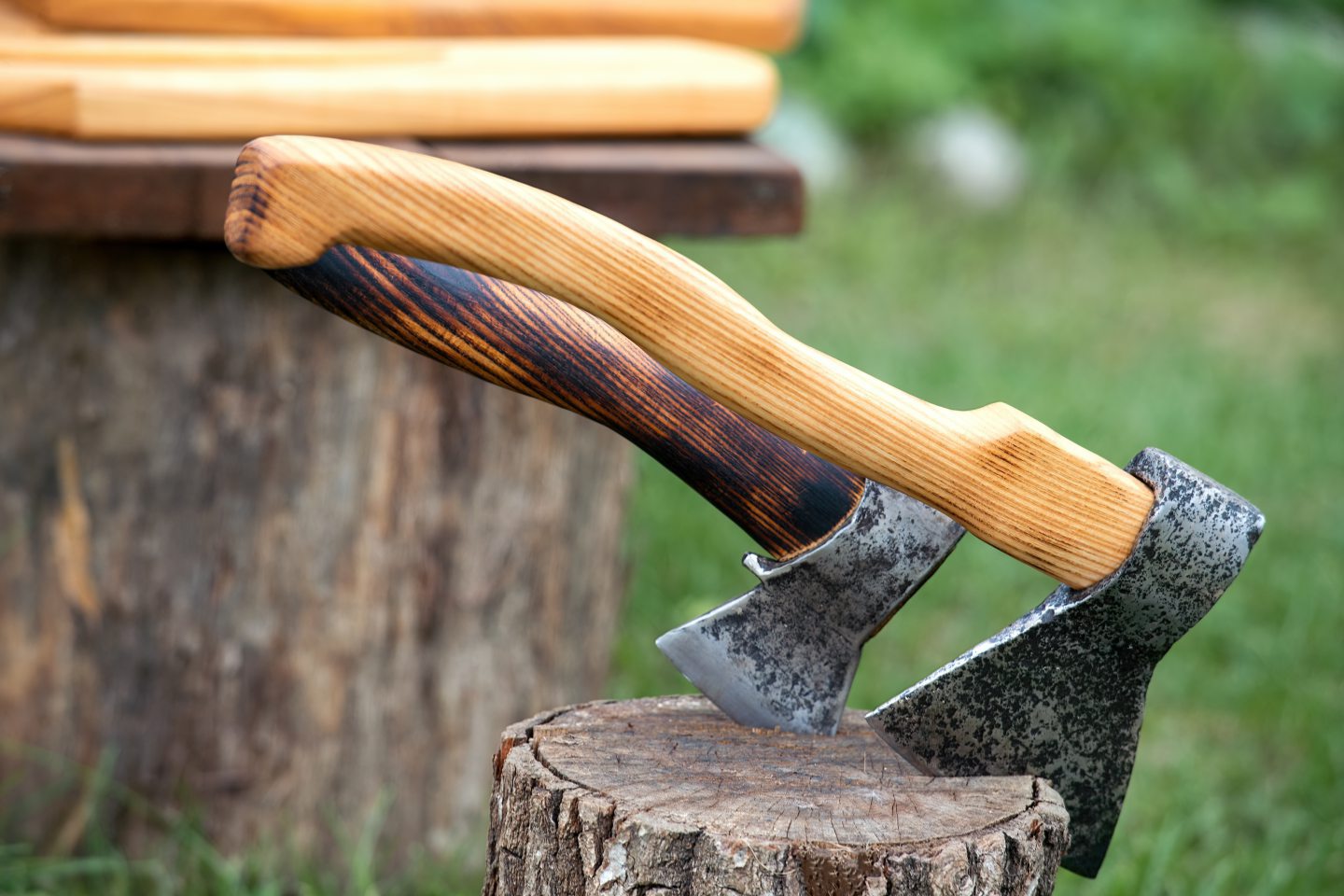Twenty-odd years ago, I was weeding the gravel and grubbed up what looked like a tiny birch seedling.
Too pretty to ignore, we put it in a jam jar of water. Then I found another. Then another. Thus began a lifestyle habit of rescuing and growing hundreds of teeny trees, seeds and cuttings, potting them up in a spot by the greenhouse I christened “Gravel Grove”, later to plant out or palm off to friends.
So far, as I’m informed by the spouse who actually does all of the grunt work, “we’ve” grown birch, beech, elm, whitebeam, oak, willow, juniper, Scots pine, hawthorn, sycamore, ash, yew, alder and holly – off into the world to save us all.
Gravel Grove makes me feel easier about all the wood we burn in our stove and on our log fire, even though we’re lucky to source it from fallen and responsibly-thinned local wood. Every so often, a cry goes up and my husband gets together with some of his friends – they call themselves the Chainsaw Masochists – to fall upon fallen boughs, sharing out the spoils for onward splitting and stacking with our families.
So, where does this wholesome, pampered point of view place me in the discussion about the abolition of wood burners in new homes? Well, I can stand up and applaud my fellow P&J columnist Iain Maciver’s “hit the teuchters while we can” dismantling of the Scottish Government’s plan, published last week. To have thousands of fellow rural Highlanders’ fundamental reliance on wood and peat fires reduced to categories labelled “exceptions” and “emergencies” is uncomfortably telling.
Furthermore, having to find yet more money to spend on oil, gas, electricity, solar panels, heat pumps, whatever, without the bonus of a barrowload of hard-won logs from the stack seems like handing a win to the energy companies.
And it simply hurts my heart to think that, in years ahead, new homes won’t have the option of a fire. The hearth is the heart of my home. Fine if you don’t want one, they are a faff, but to have the possibility removed makes the future seem less cosy, less nostalgic, more brightly-lit, and not in a good way.
The future is where the real worry lies
The future. That’s where the real worry lies. Given that the new regulations only apply to new-builds and certain conversions, it is the younger generation who will be affected to a far greater degree than us oldies, from the very outset. Starter homes, affordable housing and shared ownership property tend to be newly built. And, because of incentives such as help-to-buy schemes, they are often the only homes most of the young stand even a snowball’s chance of affording these days.
So, I turned lovingly to my three 20-something children, brought up, you’ll recall, in the firelit glow of the stove, slightly scratched and dented from bucolic days manning the axe and the wheelbarrow, and asked what they thought of the new rules. Stand down, Ipsos Mori, the exhaustive research has been done and the results are in: ech, they’re not that fussed.
Instead of wasting time reverse-engineering chimney stacks in new-builds, why not go after the giant global corporations that actually cause the real problems?
But not in the sense of not appreciating the joys of a real fire. Rather, they are too filled with quiet resignation and disappointment, too preoccupied with bigger things than whether their mythical future home (full disclosure: one child has recently managed to buy his own place) does or doesn’t have a fireplace.
Here’s the gist of their views: is this meant to be helping solve the climate crisis? Because, instead of wasting time reverse-engineering chimney stacks in new-builds, why not go after the giant global corporations that actually cause the real problems?
How about investing in infrastructure and public services so that less of us need to drive our cars everywhere? Or, or, what about some massive investment in renewables which are, you know, renewable? And in global recycling technology, so that the burning – the real, big, scary burning – stops?
Below that outburst came the smaller, sadder thought: “I’m pretty indifferent, as the prospect of me owning my own house feels way too far away.”
Can they not see the wood for the trees?
If that’s the youth perspective, admittedly from a small but perfectly-formed sample, then here’s mine: these regulations are a nasty little swipe at the autonomy of future householders’ choices, a death knell for stove manufacturers and installers, and a genuine body blow for those in locations where mainstream power is unreliable, weather-dependent or non-existent.
My daughter has a friend who says “everyone has a right to a fire.” Whether they elect to or not used to be up to them – but, now, everyone does not. And young people are already living their lives with less.
Is this all a smokescreen? Can they not see the wood for the trees? Do these regulations fan the flames of “otherness” that keep rich and poor, young and old, urban and rural, divided – and, thus, conquerable?
Heavens, it’s been a long walk from Gravel Grove to Misery Street. But at least I’ve a toasty fire to come home to.
Erica Munro is a novelist, playwright, screenwriter and freelance editor



Conversation